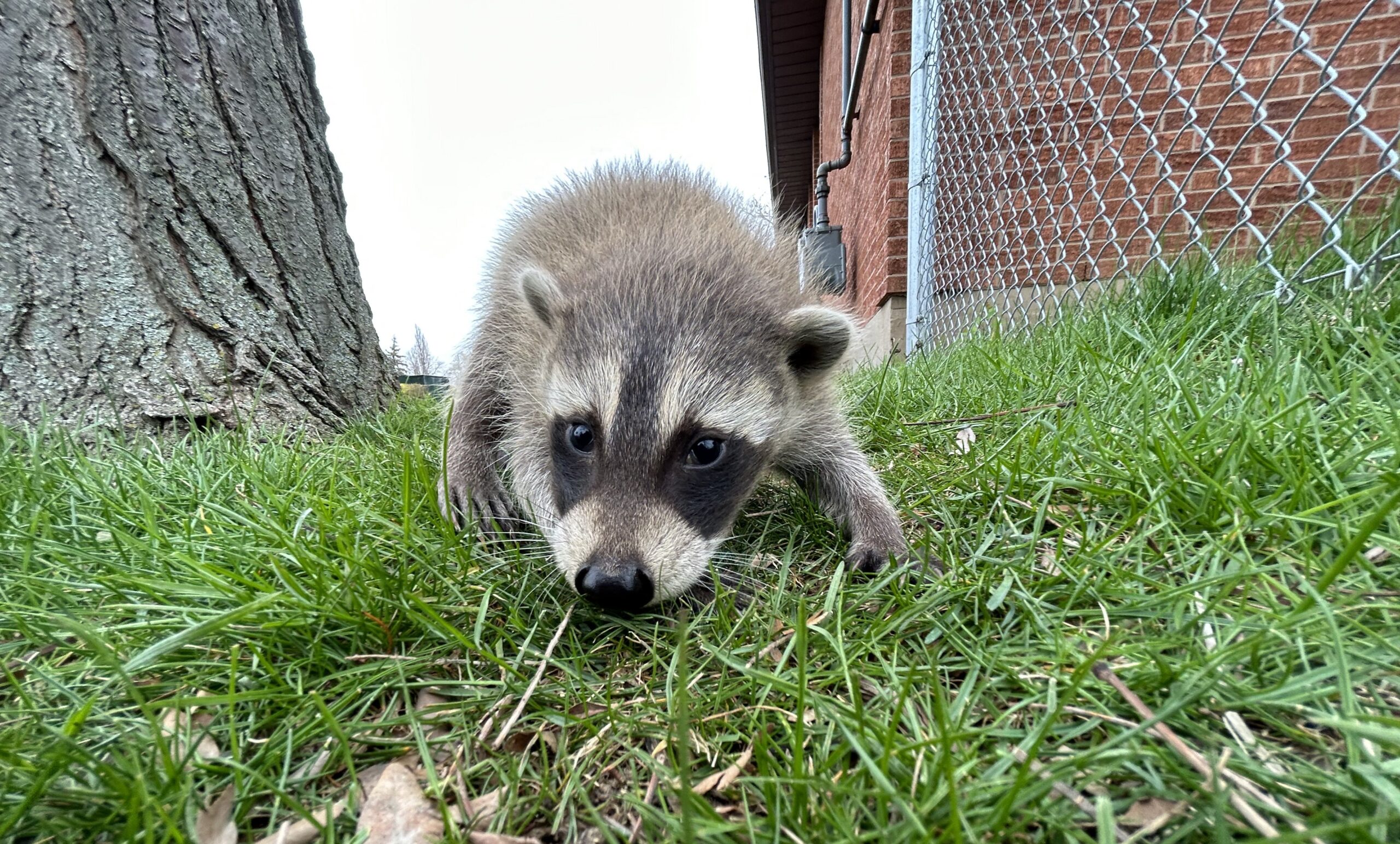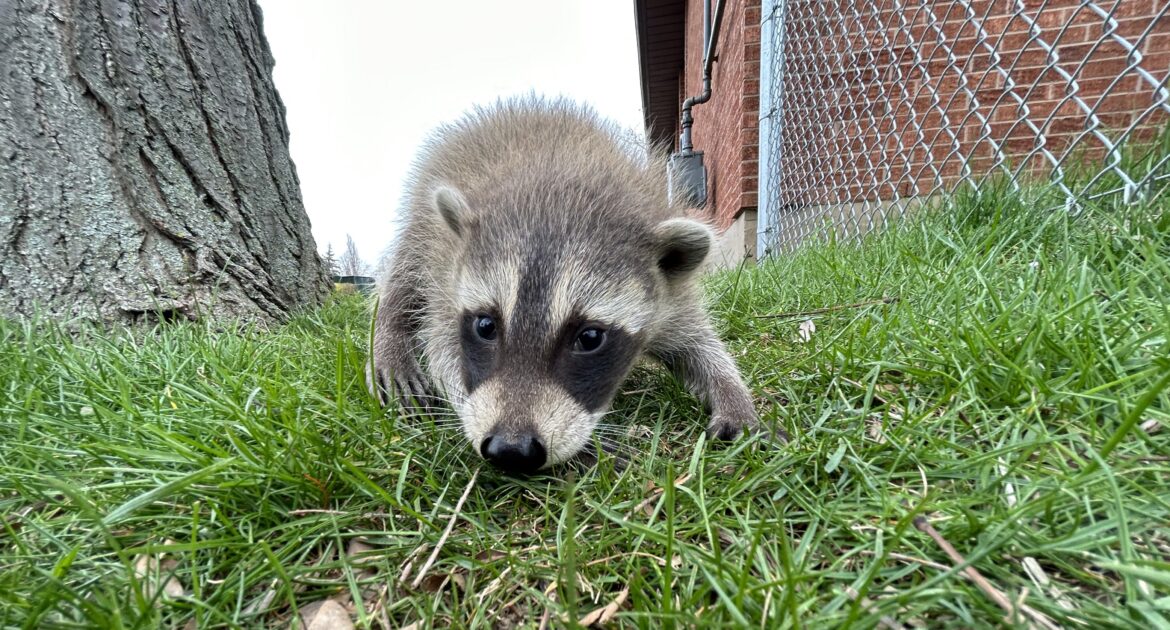Raccoons are known for their cleverness, but when they turn your attic or crawl space into their nesting grounds, they can create significant headaches. Identifying raccoon dens can save you from costly repairs and potential health risks.
Here, we’ll explore how to spot raccoons nesting in homes, the signs that suggest you may have an unwelcome guest, and actionable insights for homeowners in Minneapolis to protect their properties.
Identifying Raccoon Dens
Many homeowners are surprised to discover that raccoons often prefer urban and suburban settings, where attics, chimneys, and crawl spaces serve as ideal dens. Naturally, these animals seek out safe, warm, and enclosed spaces, making residential properties their prime targets. What sets raccoon dens apart? Here’s what to look for:
- Appearance of Entry Holes: Raccoons use their strong paws to tear away shingles, soffits, or vent covers, leaving behind jagged holes around 4 to 6 inches in diameter. Attic vents and rooflines are common entry points.
- Nesting Materials: Inside the den, you may find a mix of torn insulation, shredded fabrics, feathers, or leaves that raccoons gather to create a cozy area for themselves and their young.
- Location: Apart from attics and crawl spaces, raccoons may also shelter in chimneys, garages, or even under porch decks.
It’s important to regularly inspect these vulnerable spots in your home, particularly during the winter and early spring months when raccoons seek out spaces to create nests for their young. If you notice any unusual activity, it might be time to investigate further.
Raccoon Den Signs Around Your Home
If you live in Minneapolis, you’ve likely seen raccoons in areas like Minnehaha Regional Park or around the Mississippi River. However, when they decide to move into your home, the signs are often hard to ignore. Here are the telltale clues:
- Noises at Night: Scurrying, scratching, or thumping sounds in the walls, attic, or ceiling during nighttime hours are common signs of raccoon activity.
- Foul Odors: A growing stash of feces and urine inside a raccoon’s den can release strong, unpleasant odors that spread through your home, especially if they’ve settled in your attic.
- Visible Tracks or Paw Prints: Raccoons leave three-to-four-inch tracks with five distinct toes, often near entry points like vents or gutters.
- Damage to Exterior Structures: Torn shingles, chewed vent covers, and scratched siding are clear signs that a raccoon has tried to enter your property.
- Plucked Fruits or Tipped Trash Bins: If your garbage cans are frequently tipped over or your garden fruits and vegetables are damaged, raccoons may be nearby.
It’s easy to brush off some of these signs. A broken shingle here or a strange noise there might seem like minor issues, but they can often be precursors to a full-blown issue if left unaddressed.
How To Spot Raccoons Nesting in Homes
Raccoons nesting in a home can be challenging to detect initially, especially if they establish dens in spaces you don’t often visit. However, it’s crucial to identify the problem early to prevent further damage. Here’s how you can spot them:
- Inspect the Attic and Crawl Spaces: Use a flashlight to check for signs of disturbance, such as shredded insulation, droppings, or nesting materials in undisturbed areas.
- Look for Dark Smudges Around Entry Points: Raccoons often leave dark, oily marks as their fur rubs against surfaces when climbing into their dens. Check near attic vents, chimneys, and eaves.
- Monitor for Droppings: Raccoon feces typically appear in concentrated piles known as latrines and can contain harmful parasites. If you see these in your attic or garden, act swiftly.
- Survey Your Yard: Check for damage or signs of raccoon activity outside your home. Footprints near garden beds, bird feeders, or compost piles often indicate their presence.
- Listen Carefully: Pay attention to growling, chirping, or whimpering sounds. These noises hint at the presence of baby raccoons, especially during spring.
Being proactive and vigilant is essential as undetected raccoon nesting can lead to structural damage and ongoing infestations that are harder and costlier to resolve.
How To Prevent Raccoon Nesting in Your Home
Once you spot raccoon activity or identify a den, it’s critical to take prompt action to prevent further damage. Here’s how you can discourage them from settling:
- Seal Entry Points: After ensuring there are no animals still inside, repair and secure any holes or vulnerabilities in your roof or attic. Use durable materials like galvanized steel mesh to prevent a recurrence.
- Clean and Disinfect Affected Areas: If raccoons have left droppings, proper sanitation is necessary to eliminate harmful bacteria and parasites. Avoid cleaning these areas without protective gear.
- Trim Tree Branches: If there are tree limbs hanging over your roof, trim them at least 6 feet away to make it harder for raccoons to climb onto your property.
- Secure Garbage Bins: Ensure your trash cans have tight-fitting lids or use bungee cords to prevent access. It’s a simple step that can stop raccoons from returning.
- Remove Food Sources: Compost piles, fallen fruits, pet food, and bird feeders can all attract raccoons. Keeping these items in secured containers can make your property less appealing to them.
Keep in mind that raccoon removal requires professional expertise. Attempting a DIY approach can be dangerous, especially during baby season when mothers are highly protective. Hiring professionals like us at Skedaddle ensures the humane and effective handling of these situations.
When to Call Skedaddle for Raccoon Removal
If you notice signs of raccoons on your property, such as overturned garbage cans, scratching noises in the attic, or raccoon tracks around your home, it is crucial to act promptly. Raccoons are highly adaptable and can cause considerable damage if left unchecked. They may tear insulation, chew wiring, or create nests in vulnerable areas, leading to potential health and safety hazards. Additionally, raccoons can carry diseases such as rabies or parasites like roundworm, posing risks to you and your family.
At Skedaddle, we recommend reaching out as soon as you suspect a raccoon issue. Our team of trained professionals will assess your property, identify entry points, and create a customized plan to remove the animals humanely. We also provide exclusion solutions to prevent future invasions, ensuring long-term peace of mind.
Minneapolis Homeowners Take Note
Whether you live near scenic lakes or bustling neighborhoods, raccoons are a part of urban wildlife in Minneapolis. As they adapt to city life, they increasingly encroach on homes, turning cozy attics into nesting spots. At Skedaddle, we’ve spent over three decades helping homeowners identify and address raccoon activity. Our humane and effective methods not only remove unwanted wildlife but also ensure it doesn’t come back.
If you suspect raccoon nesting in your home, don’t wait until you’re faced with extensive damage. Call us at Skedaddle to schedule a professional assessment. Protect your property, your family, and your peace of mind.




